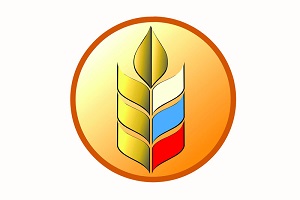The Ministry of Agriculture announced work to increase the import of eggs from the EAEU countries

In addition, the FAS, together with the Ministry of Agriculture, is analyzing the feasibility of increasing prices for chicken eggs based on the costs of producers. The challenge is to identify the reasons why prices are rising and to develop possible responses. “At the same time, an important factor is maintaining the pace of development of the industry and stimulating increased production,” a representative of the Ministry of Agriculture clarified to Izvestia.
The second area in which work will be organized jointly with the Ministry of Industry and Trade is to encourage manufacturers and retail chains to enter into long-term agreements for the supply of products, which will ensure predicted supply volumes and retail prices. This work is carried out in close dialogue with manufacturers and retail chains, the ministry noted. “We hope that the measures taken will stabilize prices for consumers. At the same time, additional regulatory measures are currently being developed in case the above are not enough,” the Ministry of Agriculture emphasized.
According to the Ministry of Agriculture, from January to September 2023, egg production in agricultural organizations increased by 2.6% to 28.8 billion pieces. In all farms - by 1.7% to 35.4 billion units. At the end of the year, the ministry expects continued positive dynamics in this sector.
According to a representative of the Volzhanin poultry farm (according to its own data, it is one of the three leaders in egg production in RUSSIA with a production volume of 1.5 billion pieces per year), the main reason for the increase in selling prices is the shift in the balance of supply and demand on the market. With high prices for MEAT , including chicken, buyers choose a more affordable source of protein - eggs, so the consumption of this product has increased. At the same time, production volumes did not increase proportionally, and avian influenza and other diseases slowed down the pace of market growth, resulting in pent-up demand and prices began to rise.
The Russian Poultry Union understands the concerns of the Ministry of Agriculture and the government, which pay special attention to issues related to prices, says the general DIRECTOR of the industry association, Galina Bobyleva. “As for the market: egg production is stable, there are no problems with it, and all stores offer our products in full range <...>. We have not had and should not have a shortage of this product for a long time,” she said. According to her, every fall the prices for eggs rise, now a dozen CO eggs in retail cost about 110-115 rubles, C1 - 95-98 rubles, and for this money it is difficult to find a product with comparable nutritional value. “For all questions that arise enterprise managers are taking appropriate measures,” Bobyleva added. A representative of the Volzhanin poultry farm also told Izvestia that the demand for eggs, and accordingly the price dynamics, are seasonal: every year they rise in the fall and before Easter.
According to the chairman of the presidium of the Association of Retail Trade Companies (AKORT), Igor Karavaev, retail has been voluntarily limiting the effect of rising purchase prices for a number of socially significant products, which include chicken eggs, for a long time. “Markups from the largest retailers for category C1 eggs are negative. A similar situation has been observed since July with the markup on tender chicken eggs, while the wholesale purchase price for it has increased significantly, especially in September and October,” he told Izvestia. At the same time, Karavaev drew attention to the fact that, given the pressure of pro-inflationary factors on all participants in the chain, retail cannot level out price increases only by optimizing its own costs in the markup structure.
Read together with it:
- Miratorg's 15th Anniversary: The Meat Retail Leader Celebrates Its AnniversarySince its founding, Miratorg has sold over 4 million tons of MEAT products and created approximately 2,000 jobs. Its branded stores employ meat experts who help customers select the best products and conduct master classes. The chain's assortment includes not only its own meat but also a variety of unique products from RUSSIA and abroad, including a premium wine collection curated by a sommelier. ...
- О самых распространенных причинах пожаров рассказали в МЧС2 октября, Минск. О самых распространенных причинах пожаров рассказал начальник главного управления надзора и профилактики МЧС Дмитрий Турчин на "Предупреждение чрезвычайных ситуаций в осенне-зимний период. Профилактика пожаров и гибели людей от них", которая прошла в БЕЛТА. "В республике наблюдается рост количества пожаров на 7,7%, и на 1......
- Новое видео на нашем канале: Какую породу овец выбрать в Казахстане? Эдильбаевская или импортные мясные породы? Опыт фермеровОвцеводство в Казахстане. Эдильбаевская порода, дорпер, суффольк, тексель, аккарабас. Отбор баранов-производителей, взвешивание, мясные качества и рентабельность Мы продолжаем съёмки про овцеводство Казахстана. В этом выпуске в кадре сразу несколько пород: эдильбаевская, аккарабас, тексель, суффольк, дорпер, а также кроссы и помеси. Мы показываем отбор баранов-производителей на случку, взвешивание...
- Боливия экспортирует говядину на сумму 797 миллионов долларов и вводит новые цифровые сертификаты для внешней торговлиЭкспорт говядины из Боливии в период с 2021 по 2025 год достиг 797 миллионов долларов. Китай является основным рынком сбыта этого мяса, на который приходится 74% продаж, сообщила Карина Серрудо, генеральный директор Национального таможенного управления. Параллельно с этим ведомство включило сертификат безопасности экспортных пищевых продуктов для говядины в систему «Единое окно для внешней торговл...




























































